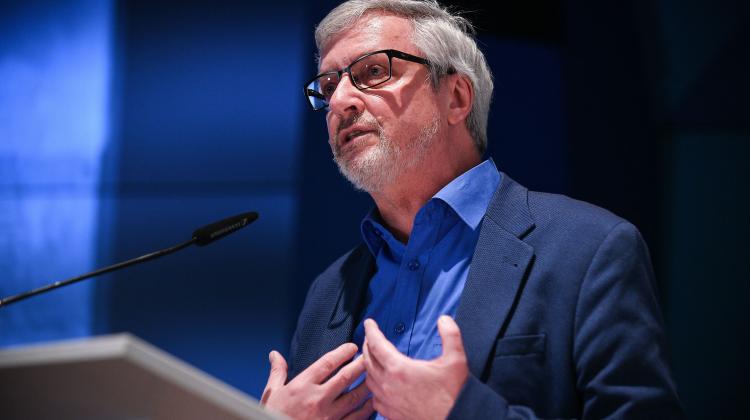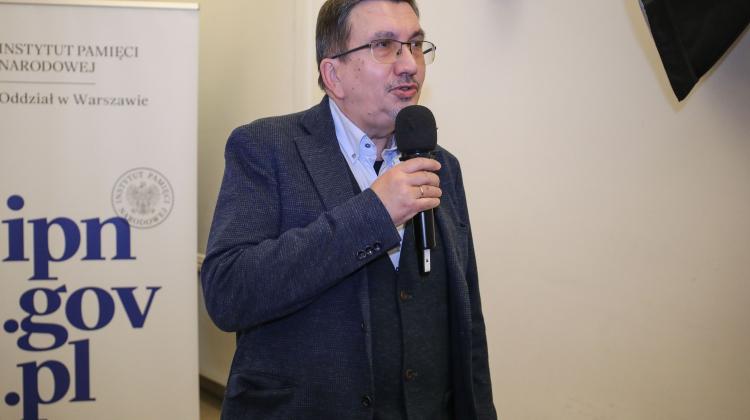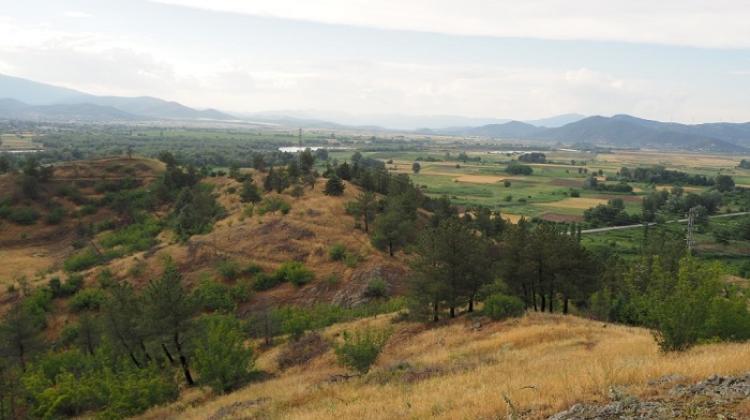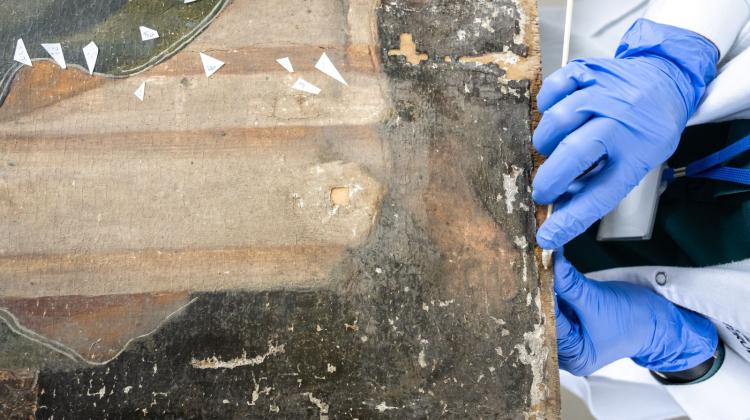Archaeologist: Ceramic fragments are more than just a good dating material
Every year, archaeologists discover tens of thousands of fragments of vessels in Poland, which usually help determining the age of archaeological sites. That is not all: their more detailed analysis allows to learn more about the old methods used by potters, says Albin Sokół from the Archaeological Museum in Biskupin.
Fragments of ceramic vessels are the most common finds of archaeologists during excavations. Millions of them are in storage. Analyses of these fragments help determine the age of the pottery itself, but also the age of the settlement or cemetery where they were discovered.
"We often forget about the people who made them. And yet, there are even fingerprints of potters on some ceramic fragments" - says Albin Sokół, archaeologist from the Archaeological Museum in Biskupin, who specialises in recreating old techniques of making ceramic vessels.
"Numerical data can be overwhelming. For example, by the year 1960 over 3.5 tons of ceramics were found during the excavations in Biskupin. The mere fact of mentioning the weight, not the exact number, gives an idea of the massive scale of these finds" - says Sokół.
Sokół notes that even a few decades ago, many scientists dealing with ceramic fragments did not know the topic from the practical side - for example, they had never made vessels themselves. Or they did not use the knowledge gained by experimental archaeologists. Meanwhile, the perspective of a re-creator helps to look at fragments of excavated ceramic vessels from a new perspective. Therefore, in recent years, ceramologists more often use the results of experimentalists` work.
"In scientific literature, one author would often quote another author`s claims and repeat the myths about making ceramic vessels. Meanwhile, practice allows to exclude certain theories" - he says. These issues are related to, for example, finishing the surfaces of vessels, firing or the purpose of adding some admixtures.
As an example of a repeated myth, Albin Sokół mentions graphite ceramics from the Late Bronze Age and the Early Iron Age, from the times of the famous defensive settlement in Biskupin. This name was used to describe vessels with a black and shiny surface.
"The above name would suggest that graphite imported from areas located south of Poland was used in their production, which gave them a unique colour and metallic gloss by adding it to the ceramic mass, or rubbing it into the surface. Meanwhile, experiments have shown that the same effect can be obtained with various methods, not necessarily by using the mineral" - says Sokół.
According to the researcher, there can be quite many similar errors regarding the views on prehistoric ceramic vessels. "However, in recent years experimental archaeology and extensive interdisciplinary analyses allow to verify many hypotheses, which allows to be optimistic" - he adds.
Some fragments of vessels discovered by archaeologists, for example, bear traces of fingerprints, others - imprints of seeds, and even fabrics or plaited mats from thousands of years ago.
"Organic materials usually do not survive to our times, so such impressions give the only insight into this sphere of production" - he says.
As for the fingerprints preserved on the fragments, despite initial enthusiasm, their study has not yielded conclusive results. Modern fingerprinting methods have not allowed to unambiguously establish whether fingerprints belonged to women or to men, or even determine the age of persons who left them. "Nevertheless, it is an interesting experience: to see such a direct trace of the maker from distant past" - he adds.
Based on several years of experience as a re-creator of prehistoric vessels, Albin Sokół says that pottery was a time-consuming and demanding occupation.
"Clay preparation could take many months, which is why the entire technological process had to be carefully planned" - he suggests. He says that this process was exhausting, as making clay and forming vessels required a lot of effort.
"Firing is always associated with hard work and extreme temperatures, and it can be felt exceptionally well during firing in an open hearth" - emphasises the archaeologist.
A long time could pass between extracting clay and forming a vessel. It would take a long time to remove debris such as roots. In addition, after a vessel was formed, it had to dry for several weeks - so that it would not crack during firing.
"Making a vessel required a lot of knowledge, which was probably passed down from generation to generation" - he says. But it appears that in the lands of today`s Poland there were no people who devoted themselves exclusively to this activity and did not have to support themselves by farming or breeding animals This situation, with some exceptions, persisted until the emergence of crafts and the creation of guilds in the Middle Ages, he notes.
Based on his own experience, Sokół claims that potters - regardless of the period - probably participated in each of the stages of the vessel`s making process, from the moment of the search for clay. "Finding the right raw material was a requirement for making good vessels" - he says.
"We know from ethnographic data that some potters would place a piece of clay on the tongue and rubbed it with their teeth, thus evaluating the granulation of the deposit - whether the clay was clean, sufficiently plastic" - he says.
Sokół says that thanks to experiments in Biskupin, he looks at the ceramic fragments differently than before his studies. "I can see the nuances of production more quickly. I also see the maker and the traces of his individual involvement" - he points out. He adds that as an archaeologist, he appreciates the titanic work of researchers who describe thousands of fragments and their features, from which they form typologies. "Modern archaeology is based on systematic analysis of a huge number of finds. I do not think that practical experience with production of vessels is absolutely necessary for their scientific development, because there are various questions in the research work. But consultation with practitioners can be really fruitful" - he says.
PAP - Nauka w Polsce, Szymon Zdziebłowski
szz/ zan/ kap/
tr. RL
Przed dodaniem komentarza prosimy o zapoznanie z Regulaminem forum serwisu Nauka w Polsce.




















